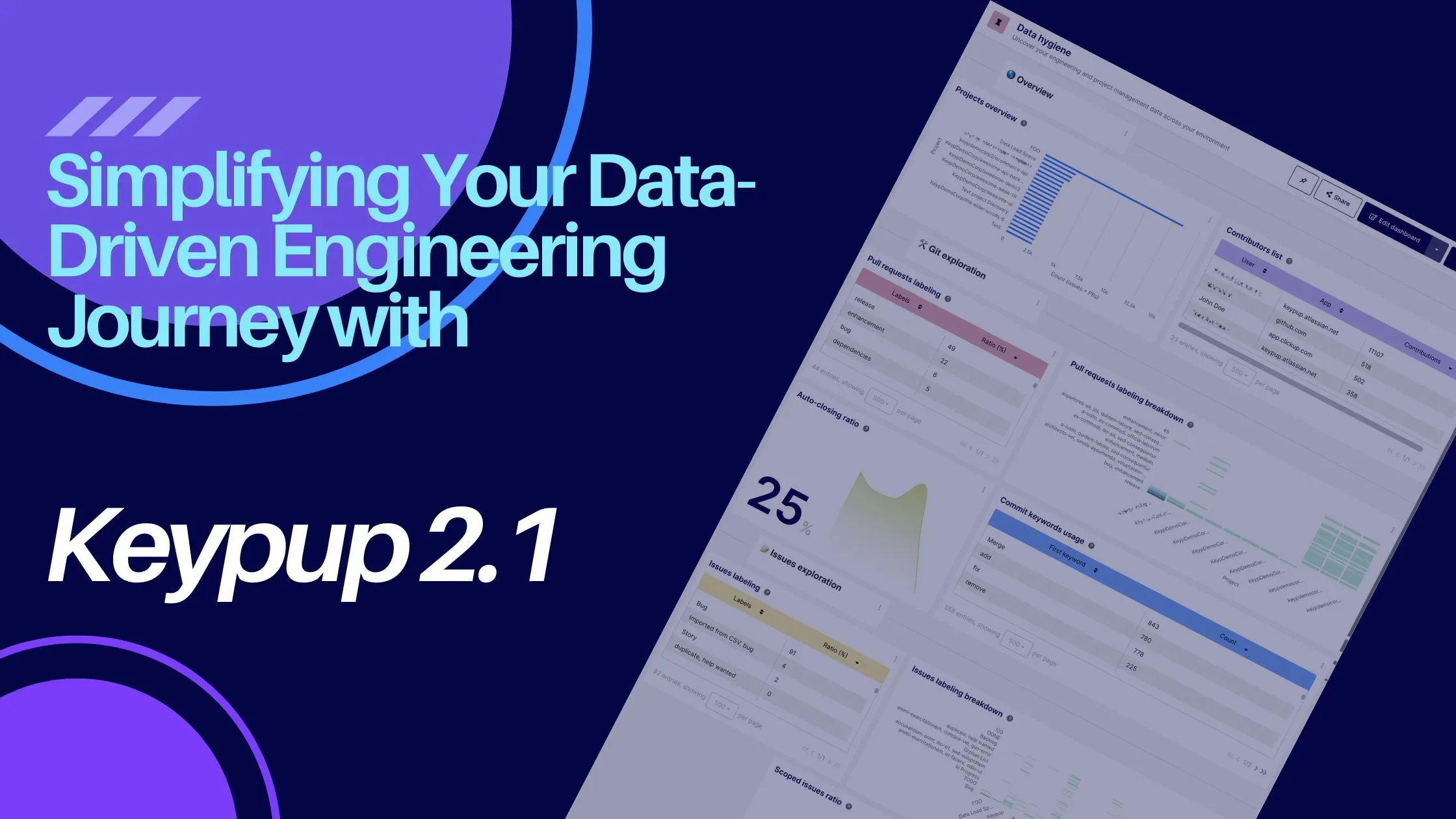Discover the Power of Keypup 2.1: Simplifying Your Data-Driven Engineering Journey



To succeed in the rapidly evolving world of software development, it is crucial to stay at the forefront of innovation. This is why we're so excited to announce the release of Keypup 2.1! This version contains a wide range of powerful new features to streamline your software development processes, drive engineering efficiency, and empower your team to succeed. Let’s explore our journey through the latest enhancements starting with the Dashboard-Wide Filtering feature, bringing new levels of flexibility and insight to your reporting.
Engineering dashboard-wide filtering simplifies and streamlines engineering reporting efforts for software development teams. Users can combine numerous identical insight filters into a single dashboard filter such as dates, teams, projects and more, creating a more efficient and cleaner reporting experience. You can gain a holistic view of your engineering metrics and KPIs by applying filters at the dashboard level rather than configuring filters for each insight individually, saving time, reducing complexity, and eliminating errors.
A standout feature of Keypup 2.1 is the Data Hygiene Dashboard. This tool provides valuable insights into keyword and label usage, team project proficiencies, and more, empowering tech leaders to dig deep into their engineering practices and data. With the Data Hygiene Dashboard, you can easily spot trends, identify areas for improvement, and facilitate more accurate reporting. Gain a holistic understanding of how your team utilizes keywords and labels, allowing you to facilitate and optimize engineering reporting practices.

Keypup 2.1 introduces a range of new chart types, elevating your data visualization capabilities to new heights. Now, you can leverage line charts, stacked area charts, stacked column charts, and stacked bar charts to present your data in a visually compelling and informative manner. Whether you're tracking project progress, analyzing performance metrics, or monitoring engineering KPIs, these new chart types offer enhanced clarity and insights, enabling you to make data-driven decisions with confidence.
Keypup 2.1 brings a smarter drilldown feature to the table, designed to enhance your data exploration process. This intelligent enhancement recommends relevant fields based on your dataset and insight configurations, providing a seamless and intuitive drilldown experience. By simplifying data navigation and exploration, you can save time and uncover valuable insights more efficiently, empowering you to make informed decisions and take proactive actions.
Collaboration is a key component of successful software development projects. With Keypup 2.1, we introduce the Guest role, allowing you to invite guests to your team and share specific dashboards with them. Guests have read-only access, ensuring data security while enabling seamless collaboration with external stakeholders. This feature promotes transparency, fosters effective communication, and enables you to involve key stakeholders in your software development process.
Keypup 2.1 introduces an exciting enhancement that expands the dataset capabilities, enabling more granular reporting for software development teams. With this update, you now have access to additional fields that bring a new level of detail and comprehensive insights to your reporting efforts. Let's explore the benefits of these expanded dataset fields and how they empower you to make informed decisions.
Keypup 2.1 is a significant milestone in our ongoing commitment to providing software development teams with the tools they need to excel. From the groundbreaking Dashboard-Wide Filtering and Data Hygiene Dashboard to enhanced data visualization, smarter drilldown, and collaborative features, this release is designed to streamline your processes, optimize reporting, and drive efficiency.
Try Keypup 2.1 today and embark on a journey toward enhanced software development processes.
Stay up to date with the latest news and insights from Keypup by following us on Twitter and LinkedIn. Explore the possibilities of Keypup 2.1 and revolutionize your software development processes today!
